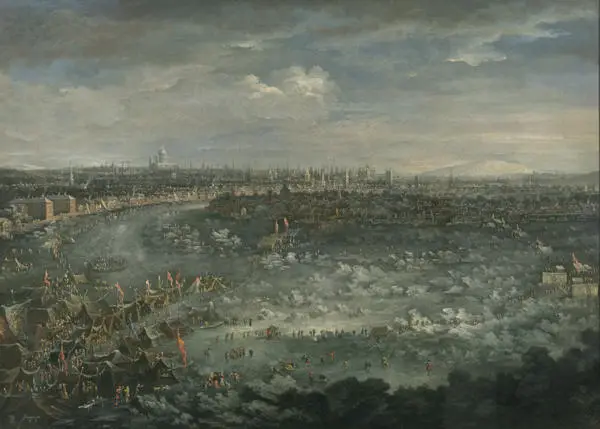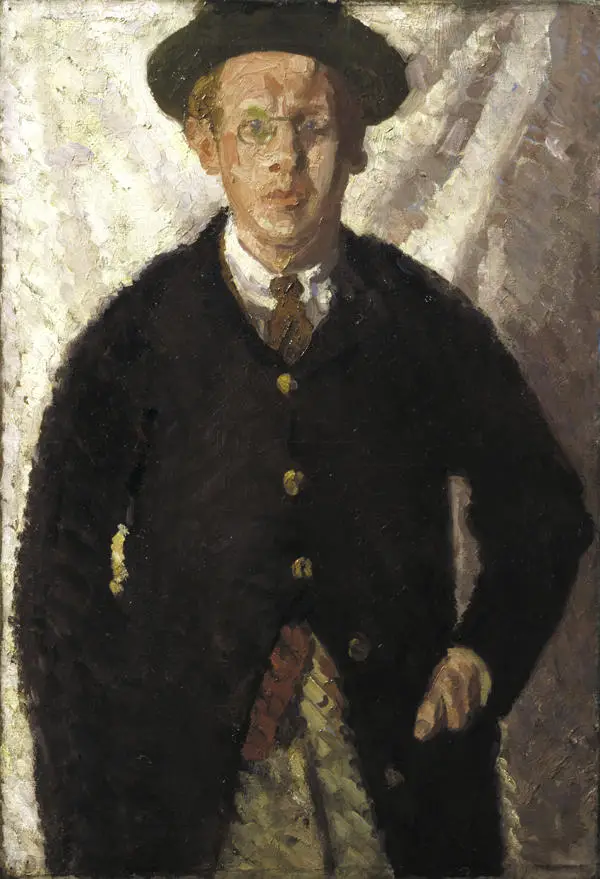Permanent Galleries
Please note that not all of the artworks in the Gallery’s collection are on display. To avoid disappointment, please check if the artwork you want to see is on display before visiting by emailing the Guildhall Art Gallery Team.
You can request an appointment to view works in storage. Email the Guildhall Art Gallery team with the artwork details that you would like to see and two preferred times (Monday to Friday, 10:30am – 4pm). Please give us at least 14 days’ notice. We can accommodate up to three people per visit.
Victorian paintings
A rich variety of Victorian paintings can be seen as you enter the Gallery, displayed in the original 19th century dense hanging style.
The collection illustrate the key artistic movements and influences of the Victorian period, from the Pre-Raphaelite Brotherhood, to Orientalism, Classicism and narrative painting, and it is displayed by theme to better contextualise the culture and social history in which the works were created.
The paintings span the years of Queen Victoria’s reign (1837-1901), though some have roots before her accession and others have a legacy extending beyond her death. This creative and dynamic period of artistic development is sometimes known as ‘the long nineteenth-century’.
In this period the approach to fine art changed across Europe, as painters challenged established ideas about 'appropriate' subjects for pictures, previously mostly restricted to the genre of history painting (an umbrella term covering themes from history, literature and the Bible). Instead, nineteenth-century artists turned to the reality of modern life around them as the main inspiration for their paintings.
Many Victorian painters sought to portray contemporary life, featuring all social classes, and frequently cross-sections of society in one picture. At the same time, artists were preoccupied with conjuring up romanticised visions from the imagination and redefining ideals of beauty.
With its focus on everyday subjects such as the home, work, travel, faith or love, Victorian art offers continuing relevance to modern viewers.

Pictures of London
The Gallery's collection of London paintings opens a window onto unusual, memorable and colourful scenes from the city's history. Dating from the 17th century onwards, they provide a vivid record of events including The Great Fire of London in 1666 and the Frost Fair of 1739. From the Thames, London’s architecture and its people, the paintings on show explore the capital’s multifaceted cityscape portrayed in a varied way by a wide range of artists.
This display represents a selection of topographical works spanning over 350 years, capturing the character of London, and inspired by its changing fortunes and myriad functions.
Instantly recognisable landmarks, such as St. Paul’s Cathedral and the city’s bridges recur. Scenes of London life in all its guises are depicted in vivid detail, capturing the hustle and bustle of market places, the timeless River Thames, and the everyday streets. Most recently, contemporary works have been added to speak to London as it is now, and to better represent its population and communities.
The story of the capital, as reflected through its art, is one of rejuvenation and celebration as well as destruction and reinvention. Some paintings relate to major historic events which shaped the architecture and structure of the city, while others are reflections on the variety of urban landscape. Some are playful, and some evoke the wonder, confusion and frustration experienced by the casual tourist and native Londoner alike.

The City
The City (or the Square Mile) is a ceremonial county and the oldest part of London. It was established by merchants as a port around AD 50, during the Roman occupation. It is one of two areas in modern London to hold city status, the other being Westminster.
By the late sixteenth-century, the area developed as a major centre for banking, international trade and commerce, offering a home to the Royal Exchange (founded in 1565) and the Bank of England. It continues to be the heart of the financial sector in Britain today.
The display in this section focuses on depictions of the Square Mile, with themes of economics, money, and the world of business. It also charts visual representations of change in the area over time – whether architectural, demographic, or attitudinal.

Sir Matthew Smith Studio Collection
Sir Matthew Smith (1879-1959) was one of the most significant British painters of the 20th century. A shy and self-effacing man, Smith’s mature work was sensuous, luscious and decorative. Acclaimed by his contemporaries, including Augustus John and Jacob Epstein, it has continued to influence succeeding generations of artists.
Smith was born into a family of Yorkshire industrialists and resisted his father’s attempts to establish him in the firm in favour of an artistic career. After a period at the Slade in London he joined Post-Impressionist artists working in Pont Aven in 1908, and later studied at the Atelier Matisse in Paris.
After serving in the First World War, Smith suffered with his mental health and his work from the 1920s period is characterised by dark and brooding landscape subjects and still-lifes. However, he later became known for colourist nude portraiture which exuded sensuality.
Smith left the contents of his studio to his friend and model Mary Keene, who in 1974 presented 175 oil paintings and more than 1,000 works on paper to the City of London. Including rapid on-the-spot sketches, hundreds of studies from the nude model, unfinished compositions, and paintings from which he did not want to be parted, the collection offers a unique insight into the artist’s practice.
A small selection of Smith’s work is permanently on display at the Gallery.

These are some other paintings from our permanent collection. Please be mindful that all of our images are protected by Copyright.
For more information on the use of our images you can read our Reproducing an Image section.










